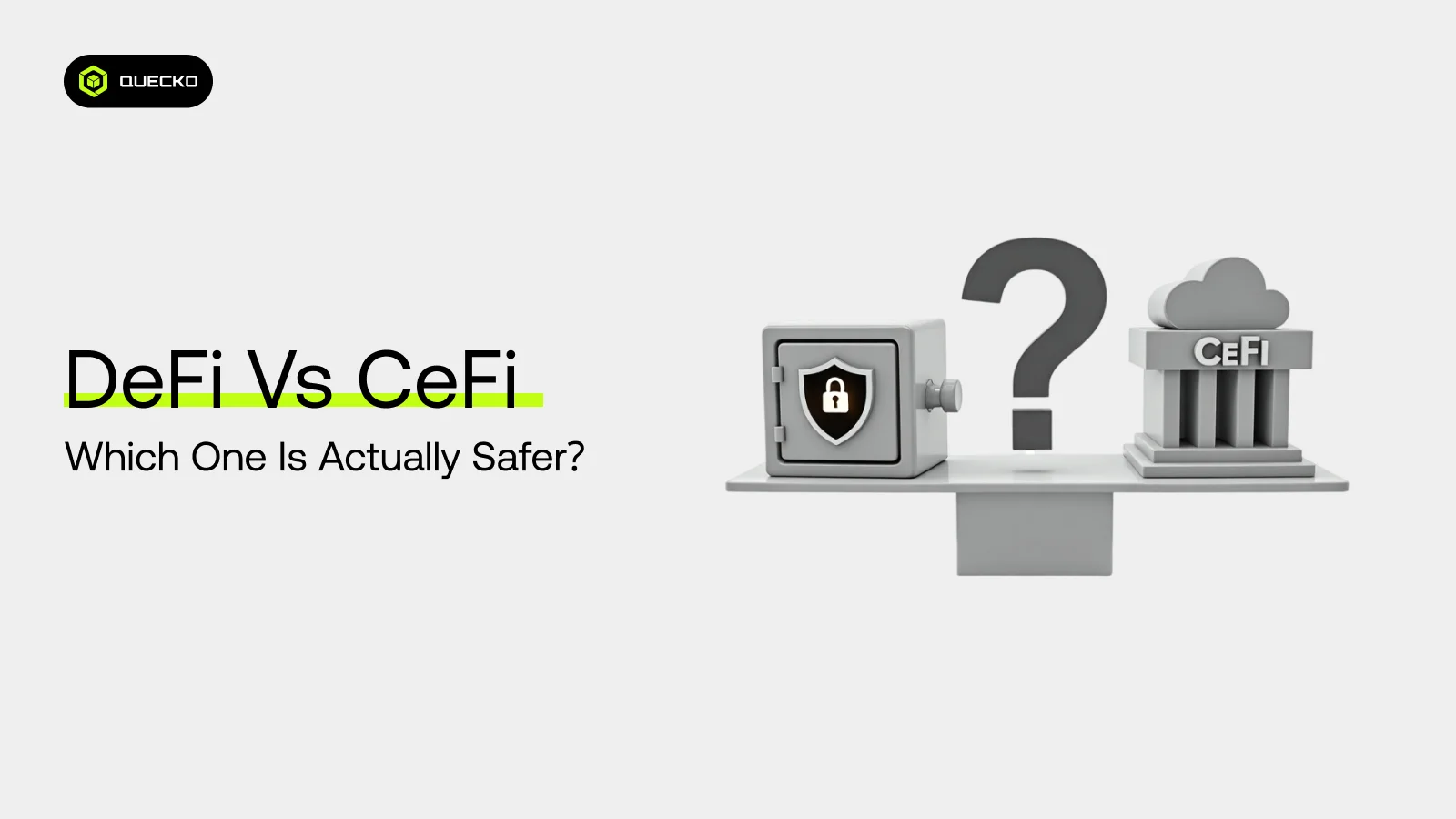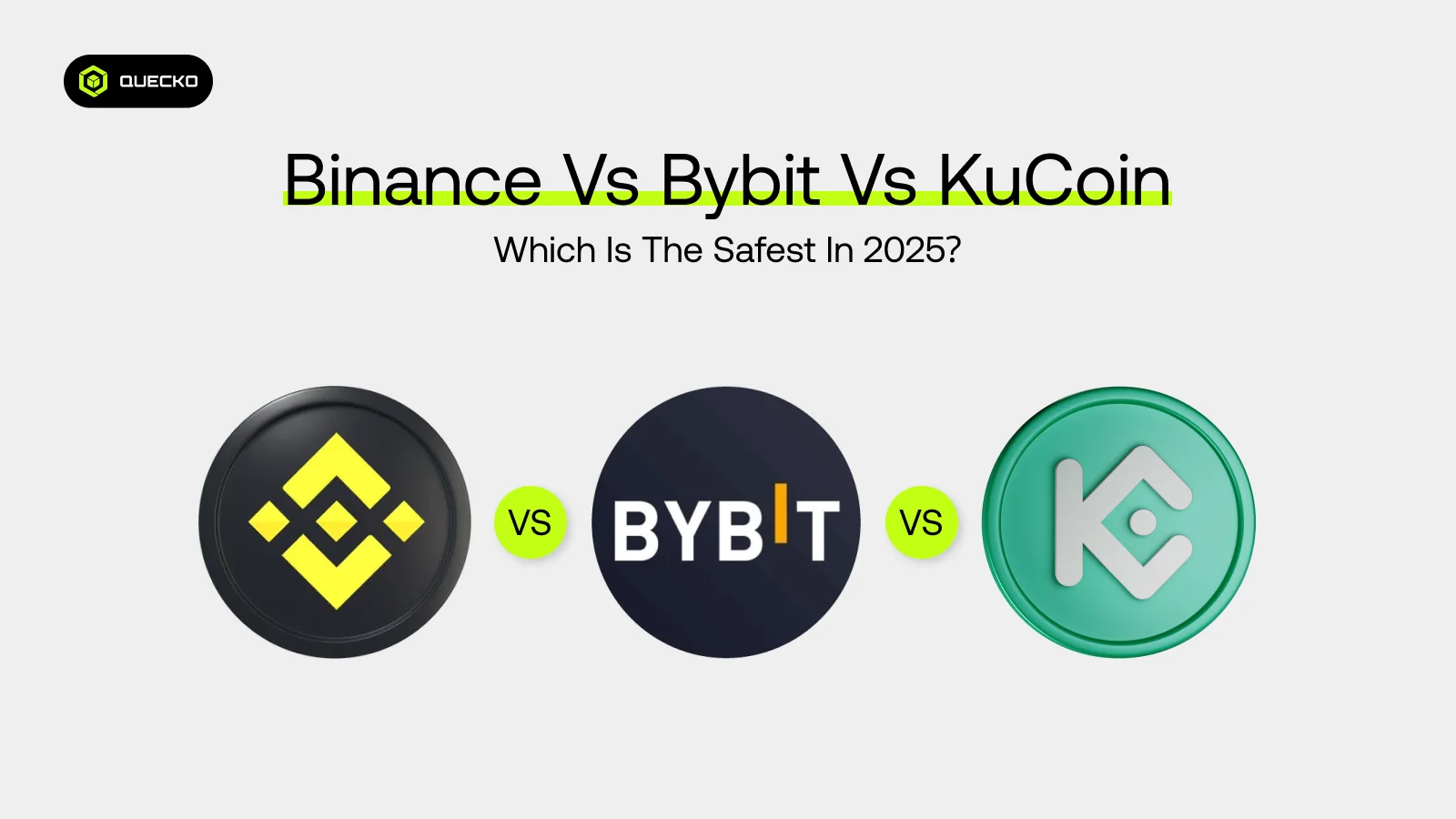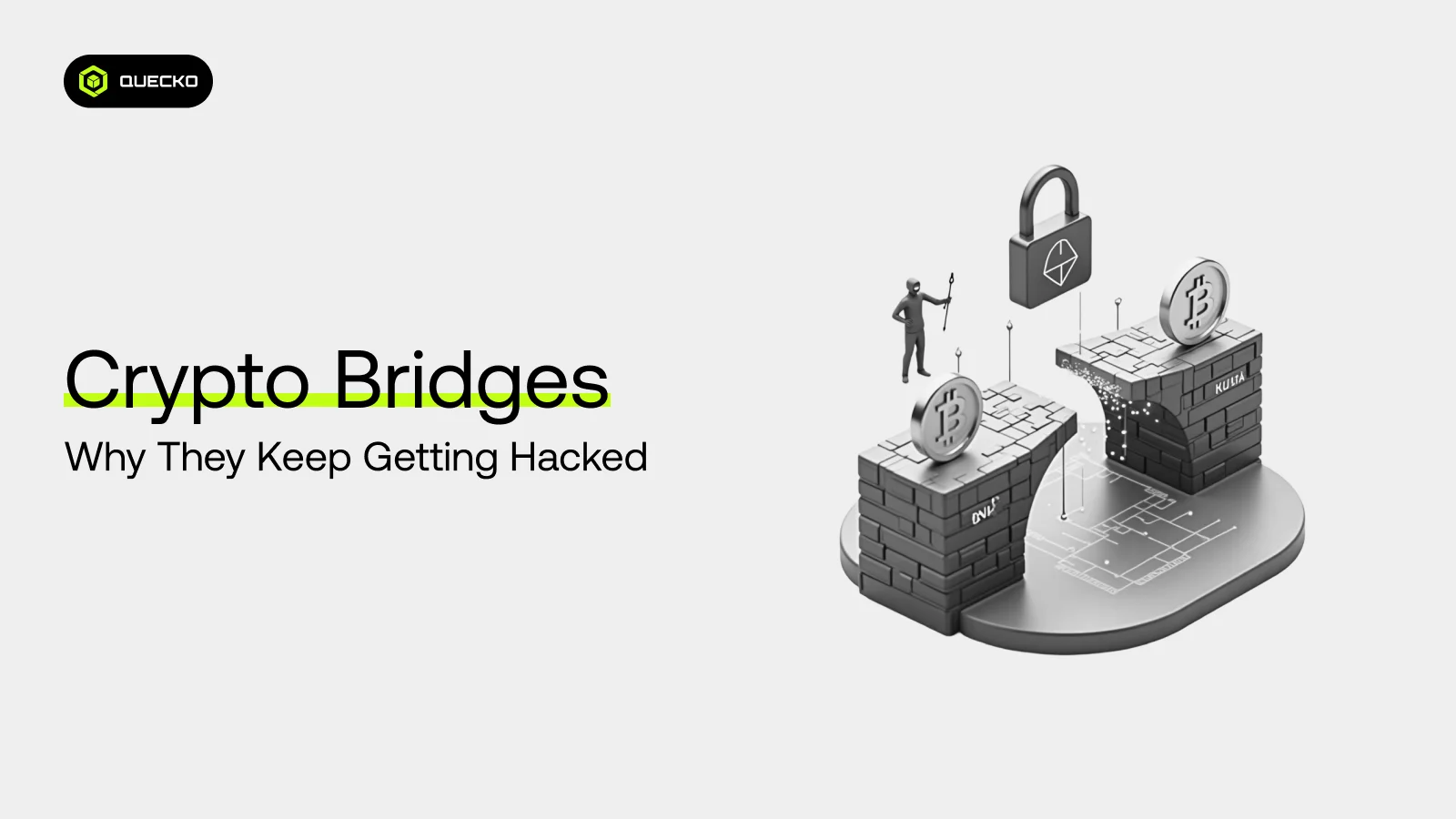Crypto Bridges: Why They Keep Getting Hacked
Discover the reasons behind frequent hacks targeting crypto bridges, understanding their vulnerabilities and what measures can improve their security. Learn why these crucial blockchain connectors remain prime targets for cyber attackers.
In the rapidly evolving landscape of blockchain technology and decentralized finance (DeFi), crypto bridges—such as Poly Network, Ronin Network, and Ronin Bridge—have emerged as essential tools that facilitate interoperability between different blockchain networks. These bridges enable users to transfer assets seamlessly across diverse chains, fostering greater liquidity, accessibility, and innovation within the crypto ecosystem, including platforms like Axie Infinity.
However, despite their critical role, crypto bridges have become notorious for their recurring security vulnerabilities, making them prime targets for hackers. Notable incidents involving Poly Network and the Ronin Network have highlighted these risks, raising pressing questions: Why are crypto bridges so frequently compromised? What underlying vulnerabilities make them attractive targets? And what measures can be implemented to enhance their security and safeguard assets across networks?
What Are Crypto Bridges?
Crypto bridges are technology solutions that connect different blockchain networks, allowing them to communicate and transfer assets seamlessly. They enable users to move cryptocurrencies and data between disparate blockchains, such as from Ethereum to Binance Smart Chain, facilitating interoperability and expanding the functionality of decentralized applications across multiple platforms.
Crypto bridges are blockchain protocols that enable the transfer of assets and data between different blockchain networks. Their primary purpose is to facilitate interoperability, allowing users to move tokens, information, and value seamlessly across diverse platforms.
Types of Crypto Bridges
Crypto bridges are specialized protocols that facilitate interoperability between different blockchain networks, enabling the transfer of assets, data, and information across disparate chains.
There are several types of crypto bridges, each designed to address specific use cases, security considerations, and technical architectures.
1. Trustless Bridges (Decentralized Bridges)
Trustless bridges operate without relying on a centralized authority. They utilize smart contracts and cryptographic proofs to verify and facilitate cross-chain transfers.
- Features:
- Use multi-signature schemes, decentralized validators, oracles, or relayers.
- Reduce counterparty risk by eliminating the need to trust a third party.
- Examples: Polygon’s PoS bridge, Wormhole (for Solana and Ethereum).
2. Federated or Semi-Trustless Bridges
These bridges involve a group of trusted entities or validators that coordinate to facilitate cross-chain transactions.
Features:
- Relies on a consortium of validators or oracles.
- Often used in enterprise or permissioned blockchain settings.
3. Pegged or Wrapped Asset Bridges
These bridges lock assets on one chain and create equivalent tokens (wrapped assets) on another chain, maintaining a 1:1 peg.
- Features:
- The original asset is held in a custody or escrow account.
- Wrapped tokens represent the original asset on the target chain.
4. Hash Time-Locked Contracts (HTLC)-Based Bridges
HTLCs enable trustless atomic swaps by locking assets with cryptographic hashes and time constraints.
Features:
- Facilitates cross-chain swaps without intermediaries.
- Uses cryptographic proofs to ensure atomicity.
5. Interoperability Protocols and Layer-2 Bridges
These are protocols or layer-2 solutions that connect multiple chains or enable scalability.
- Features:
- Protocols like Cosmos’ Inter-Blockchain Communication (IBC), Polkadot’s para chains, and Avalanche subnets.
- Facilitate communication and asset transfer across multiple chains.
Summary Table
| Type | Mechanism | Examples | Security Level | Use Cases |
| Trustless (Decentralized) | Smart contracts, cryptographic proofs | Wormhole, Polygon PoS | High | Cross-chain asset transfers, dApps |
| Federated/Semi-Trustless | Validator groups, oracles | RSK, some enterprise bridges | Moderate | Enterprise solutions, permissioned chains |
| Pegged/Wrapped Assets | Custody + token issuance | WBTC, BUSD on BSC | Moderate to High | DeFi, asset diversification |
| HTLC-based | Hash locks, cryptographic swaps | Bitcoin-Litecoin atomic swaps | Very High | Trustless swaps, cross-chain exchanges |
| Protocols/Layers | Protocol-level interoperability | Cosmos IBC, Polkadot, Avalanche | Varies | Multi-chain ecosystems, scalability |
Choosing the right type of crypto bridge depends on the specific needs for security, speed, decentralization, and technical compatibility. As blockchain technology continues to evolve, hybrid solutions combining multiple bridge types are emerging to enhance interoperability while balancing security and usability.
The Importance of Crypto Bridges
In the rapidly evolving landscape of blockchain technology, interoperability has become a cornerstone for the development of a truly interconnected digital ecosystem.
1.Enhanced Liquidity and Capital Efficiency:
Crypto bridges enable users to move assets such as tokens, cryptocurrencies, or NFTs across different chains. This movement unlocks liquidity trapped within specific networks, allowing for more efficient capital utilization.
2.Interoperability and Ecosystem Growth:
Different blockchains often serve distinct purposes—Ethereum for decentralized applications, Binance Smart Chain for fast transactions, Solana for high throughput, and so on. Crypto bridges foster interoperability, allowing these diverse ecosystems to work together and share data.
3.Access to Diverse Features and Services:
Each blockchain offers unique features. Bridges enable users to leverage the strengths of multiple networks without being confined to a single chain. For example, users can move assets to networks with lower fees or faster confirmation times, optimizing their experience based on their needs.
4.Decentralization and Resilience:
By connecting multiple blockchains, crypto bridges contribute to a more decentralized and resilient infrastructure. If one chain experiences issues or congestion, assets and operations can be rerouted through alternative networks, reducing systemic risk.
5.Enabling DeFi and Cross-Chain Applications:
Decentralized Finance (DeFi) projects greatly benefit from crypto bridges by accessing a broader universe of assets and liquidity pools. Cross-chain DeFi applications rely on bridges to aggregate assets from multiple sources, offering users more comprehensive financial services.
The Growing Problem Why Are Crypto Bridges Being Hacked
In recent years, blockchain technology has revolutionized the financial landscape by enabling decentralized transactions, smart contracts, and a new era of digital assets. Central to this ecosystem are crypto bridges, which facilitate interoperability between different blockchain networks. These bridges allow users to transfer tokens and data seamlessly across diverse chains, fostering a more connected and versatile blockchain environment.
1. Complexity and Architectural Vulnerabilities
Crypto bridges are inherently complex systems. They operate as middleware layers that connect disparate blockchains with varying protocols, consensus mechanisms, and security models. This complexity introduces numerous points of potential failure. Many bridges rely on multi-signature wallets, smart contracts, or centralized validators to verify cross-chain transactions.
2. Smart Contract Risks
Smart contracts form the backbone of many crypto bridges, automating token swaps and transaction validations. However, smart contracts are susceptible to coding bugs, logic flaws, and vulnerabilities that hackers can exploit. Past incidents, such as the 2022 attack on the Ronin Network or the Wormhole bridge hack, showcase how a single flaw in a smart contract can lead to multi-million dollar breaches.
3. Centralization Concerns and Trusted Validators
Many bridges employ a set of trusted validators or relayers to authorize cross-chain transactions. If these validators are centralized or have insufficient security measures, they become attractive targets.
4. Lack of Standardization and Security Best Practices
The lack of industry-wide standards for building and auditing crypto bridges contributes to vulnerabilities. Many projects develop custom solutions without comprehensive security audits or thorough testing. As a result, poorly designed or unvetted bridges are more susceptible to exploits.
5. Incentives and Targeted Attacks
Hackers are highly motivated to target crypto bridges because of the substantial assets they hold. The potential payoff encourages sophisticated, well-funded attacks.
In short, Crypto bridges are vital for realizing the full potential of blockchain interoperability, but their design complexity, reliance on smart contracts, centralized components, and lack of standardized security practices make them attractive targets for hackers.
Common Vulnerabilities and Why They Persist
In the realm of cybersecurity, vulnerabilities are weaknesses or flaws within systems, applications, or networks that can be exploited by malicious actors to compromise confidentiality, integrity, or availability. Understanding these vulnerabilities is crucial for developing effective security strategies.
Common Vulnerabilities
- Injection Flaws (e.g., SQL Injection, Command Injection)
- These occur when untrusted data is sent to an interpreter as part of a command or query, allowing attackers to execute arbitrary commands or access unauthorized data.
- Broken Authentication and Session Management
- Flaws that allow attackers to compromise passwords, keys, or session tokens, leading to unauthorized access.
- Cross-Site Scripting (XSS)
- Vulnerabilities that enable attackers to inject malicious scripts into web pages viewed by other users.
- Insecure Direct Object References
- When applications expose internal implementation objects, such as files or database keys, without proper access controls.
- Security Misconfigurations
- Improper setup of security controls, default configurations, or overly verbose error messages that expose sensitive information.
Why These Vulnerabilities Persist
Despite widespread awareness and advances in security tools, these vulnerabilities continue to persist for several reasons:
- Complexity of Modern Systems
- Modern applications and infrastructures are highly complex, making it challenging to identify and patch all vulnerabilities comprehensively.
- Legacy Systems and Software
- Organizations often rely on outdated systems that are no longer supported or patched, creating persistent attack surfaces.
- Resource Constraints
- Limited budgets, personnel, or expertise can delay or prevent timely security assessments and remediation efforts.
- Rapid Development Cycles
- Fast-paced development, especially with agile methodologies, may prioritize feature delivery over security, leading to overlooked vulnerabilities.
- Misaligned Incentives
- Business pressures or lack of security awareness can lead to deprioritizing security measures.
In short, common vulnerabilities are often the result of systemic issues, human factors, or technological complexities. Addressing them requires a multi-layered approach, including regular patching, secure coding practices, comprehensive testing, user education, and ongoing monitoring.
How Can the Security of Crypto Bridges Be Improved?
Crypto bridges are essential components in the blockchain ecosystem, enabling interoperability between different blockchain networks by allowing tokens and data to transfer seamlessly across chains. However, their complex architecture and the critical role they play make them attractive targets for malicious actors. Here are key strategies and best practices to improve their security:
1. Implement Robust Smart Contract Security Practices
- Formal Verification: Mathematically prove smart contract correctness to reduce bugs.
- Code Audits: Perform thorough audits by reputable firms to identify and fix security issues pre-deployment.
- Modular Design: Create upgradeable, modular contracts to isolate components and facilitate targeted patches.
2. Adopt Multi-Layered Security Architectures
Multi-Signature Validation: Require multiple validator signatures for critical actions to prevent single points of failure.
Threshold Signatures & Schemes: Enable a subset of validators to authorize actions, enhancing security against compromises.
Time Locks & Delays: Implement delays on sensitive operations for community review and intervention.
3. Enhance Validator and Guardian Reliability
Decentralized Validator Sets: Ensure a diverse and geographically distributed validator set to prevent collusion or targeted attacks.
Incentive Mechanisms: Design incentives that align validator interests with security, such as staking requirements, penalties for malicious behavior, and reward systems.
- Regular Key Rotation: Periodically rotate validator keys and credentials to minimize the window of opportunity for attackers.
4. Utilize Cross-Chain Communication Protocols with Proven Security
- Verified Messaging: Use cryptographically secure, verifiable message passing protocols (e.g., Light Clients, Tendermint, or HoneyBadgerBFT) to ensure messages are authentic and untampered.
- Decentralized Relays: Employ decentralized relayer networks with economic incentives to prevent censorship and malicious relay attacks.
5. Implement Security Monitoring and Incident Response
- Continuous Monitoring: Deploy real-time monitoring tools to detect anomalies, suspicious activities, or breaches promptly.
- Auditing & Penetration Testing: Regularly simulate attacks to identify vulnerabilities before malicious actors do.
- Emergency Protocols: Establish clear procedures for emergency shutdowns, asset freezes, or rollback mechanisms if a breach is detected.
Participate in Security Consortia: Engage with alliances and consortiums that share threat intelligence and coordinate responses to attacks.
In short, securing crypto bridges, such as cross-chain bridges and blockchain bridges, requires a multifaceted approach combining technical safeguards, decentralized governance, continuous monitoring, and community engagement. As blockchain technology evolves, so too must the security measures, emphasizing proactive risk management, transparency, and resilience against increasingly sophisticated attacks.
Current Challenges in Cross-Chain Bridges:
- Security Vulnerabilities:
Many existing bridges have suffered from exploits and hacks, often due to smart contract bugs, centralized custodianship, or flawed consensus mechanisms. - Centralization Risks:
Some bridges rely on trusted custodians or validators, creating single points of failure and undermining the decentralized ethos of blockchain. - Complexity and Scalability:
As the number of blockchains grows, maintaining efficient and scalable bridges becomes increasingly complex, risking bottlenecks and reduced performance. - Lack of Standardization:
Divergent protocols and standards make interoperability difficult, leading to fragmented solutions rather than a unified system.
Emerging Trends and Future Directions
- Advanced Security Protocols
Future cross-chain bridges will likely incorporate sophisticated security models, such as:
- Threshold Signatures and Multi-Party Computation (MPC):
Distribute control among multiple parties to prevent single points of failure and reduce attack surfaces. - Zero-Knowledge Proofs (ZKPs):
Enable privacy-preserving verification of cross-chain transactions, ensuring validity without revealing sensitive data. - Formal Verification:
Employ rigorous mathematical methods to verify the correctness and security of bridge smart contracts.
- Decentralized and Trustless Solutions
Moving away from centralized custodians, the future will favor fully decentralized cross-chain protocols that rely on cryptographic proofs, multi-party consensus, and decentralized validators. - Standardization and Protocols
The development of universal standards—such as Inter-Blockchain Communication (IBC)—will facilitate smoother interoperability, ensuring that different blockchains can communicate reliably and securely. - Layer-2 and Sidechain Integration
Layer-2 solutions and side chains will play a crucial role in offloading transactions from main chains, increasing throughput and reducing costs. Secure bridges connecting layer-2 solutions will expand scalability while maintaining security..
Potential Impact and Use Cases
- Decentralized Finance (DeFi):
Secure cross-chain bridges will enable users to leverage assets across multiple DeFi platforms, enhancing liquidity and financial products. - NFT and Digital Asset Portability:
Seamless transfer of non-fungible tokens and digital assets across chains will unlock new markets and use cases. - Interoperable Decentralized Applications (dApps):
Developers will build applications that operate seamlessly across multiple blockchains, expanding functionality and user reach.
In short, the future of secure cross-chain bridges hinges on integrating cutting-edge cryptography, decentralization principles, validator nodes, standardized protocols, and lessons from projects like Sky Mavis and Nomad Bridge to create resilient, scalable, and trustless interoperability solutions.
Conclusion
In conclusion, the persistent vulnerabilities of crypto bridges highlight the complex challenges inherent in securing cross-chain interoperability within the cryptocurrency ecosystem. Despite advancements in blockchain technology, attackers continue to exploit technical flaws, governance weaknesses, and insufficient audits to compromise these vital connectors, such as the Harmony bridge.
To mitigate future breaches, stakeholders must prioritize robust security practices, comprehensive testing, and transparent governance frameworks, emphasizing the importance of secure hot wallets and blockchain analytics, especially in cases involving entities like Sky Mavis.
Date
4 days agoShare on











